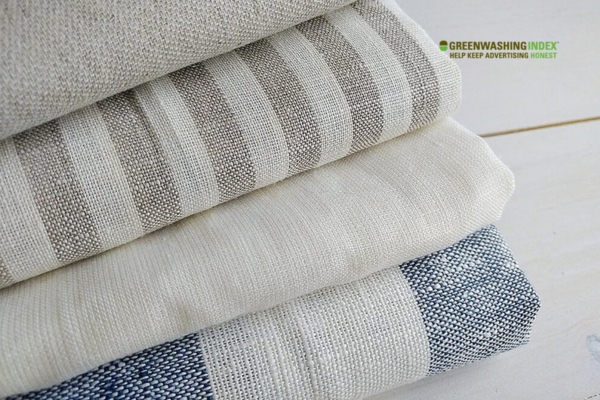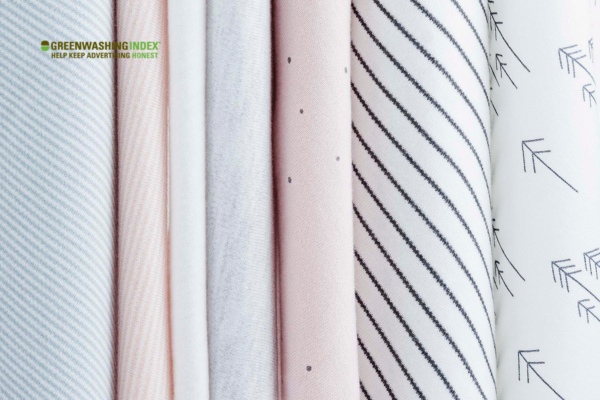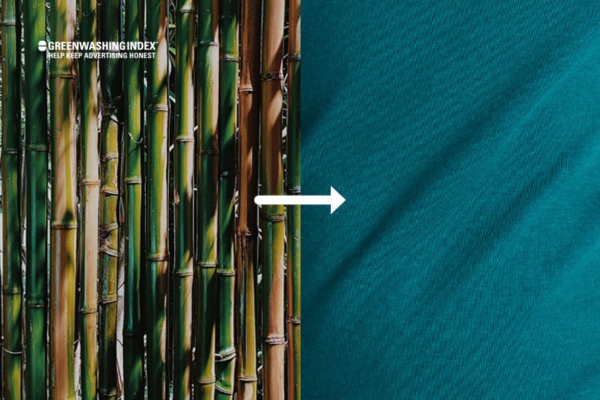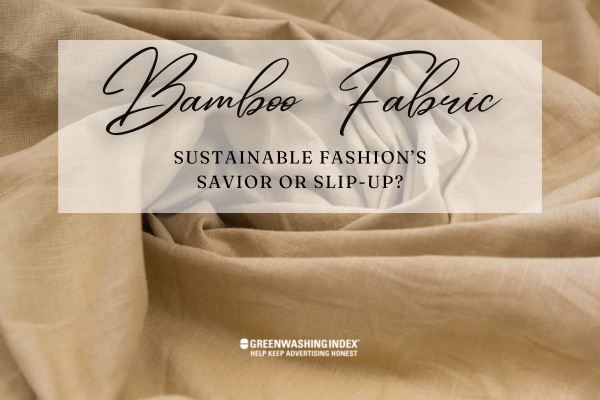As I am cautiously transitioning towards a more eco-conscious lifestyle, my search for sustainable fashion alternatives took me to the unique domain of bamboo fabric. Intriguing, right? Bamboo, generally associated with pandas and Asian aesthetic architecture, is now a pivotal player in the textile industry. But is this transition ushering us into an era of ‘green’ revolution or setting us up for an ecological mistake of epic proportions? I decided to dig deeper.
Vouching for its sustainability, bamboo fabric has indeed emerged as a promising prospect in the eco-friendly textile industry. Naturally regenerative and requiring minimal agricultural interference, bamboo indeed promises low-impact cultivation. However, at the heart of this shimmering “sustainable” claim lie some possible dark realities that are hard to ignore – like its chemical-intensive production process and resulting environmental implications.
Here’s What You’ll Find Inside:
- A comprehensive exploration into the world of bamboo fabric
- Evaluating its eco-friendly credentials
- Digging deep into its manufacturing and processing journey
- Scrutinizing its role in revolutionizing the textile industry
- Analysing consumer sentiments and behaviors towards bamboo textiles
- Unlocking potential challenges hindering large-scale production
- Projections on how these challenges might shape future sustainability strategies
What is Bamboo Fabric?
Bamboo fabric, as you might already guess, is a textile derived from the bamboo plant. Over the past few decades, it has become increasingly popular due to its numerous perceived benefits. The growing interest in this material revolves around its unique properties and production process.

- Process: Bamboo pulp is used to create bamboo fiber, which then gets spun into yarn and ultimately produced into fabric. Like cotton or silk manufacturing, bamboo’s transformation requires several stages including boiling and combing of the fibers.
- Unique Aspects: These fabrics can exist as pure bamboo textiles or can be blended with other materials such as cotton, hemp, or even spandex for versatility in use.
Now that we’ve unveiled what bamboo fabric is let’s reveal why it’s creating such a buzz in the fashion industry.
The Allure of Bamboo Fabric
Bamboo fabric has some impressive cards up its sleeve that make it quite alluring. It’s often lauded for various characteristics:
- Softness: If you’ve ever caressed a piece of clothing made from bamboo textile before, you likely noticed how incredibly soft it feels against your skin—almost similar to silk or cashmere.
- Breathability: Thanks to its micro-gaps and holes that generate exceptional ventilation capabilities – a property highly appreciated by sweaty folks on hot summer days!
- Moisture-wicking Capability: Bamboo fibers are naturally moisture-absorbing making them fantastic at keeping you dry during any high-energy activity or exercise routines— so goodbye sweaty gym tees!
- Hypoallergenic Quality: One more appealing aspect for people with sensitive skin is that this fabric doesn’t irritate as traditional synthetic ones do causing minimum allergic reactions if any at all.
- Eco-friendly Appeal: But beyond these direct consumer benefits lies another strong selling point—the promise of an eco-friendly textile industry. This attribute is primarily attributed to the bamboo plant’s naturally sustainable growth habits.
Sustainability Analysis of Bamboo Fabric
Bamboo fabric is often marketed as a green product, but how sustainable is it really? When I looked into this, I found a few points worth mentioning.
Environmental Impact
When we talk about the environmental impact of bamboo fabric, it’s important to consider both sides of the coin: the beneficial and the problematic aspects. Here’s what I found:
- PROS:
- Rapid Growth: One reason why bamboo fabric seems eco-friendly is because bamboo plants grow quickly. They can regenerate in just 3 to 5 years, making them a renewable resource.
- Low Water Usage: Unlike cotton plantations which need large amounts of water, bamboo can thrive with minimal rainfall and without irrigation.
- No Need for Pesticides: Bamboo plants naturally resist pests, reducing the need for harmful pesticides that could harm our planet.
- CONS:
- Heavy Use Of Chemicals: The process of transforming bamboo into soft fabric involves various hazardous chemicals like carbon disulfide. Workers and nearby communities may suffer from health issues due to these chemicals.
- Deforestation: While no deforestation is required to grow bamboo directly, existing forests are sometimes cleared to make way for new bamboo plantations.
- Energy Intensive Processing: Converting raw bamboo into usable fibers requires considerable energy which may lead to the burning of fossil fuels contributing to CO2 emissions.
From Plantation to Product
Understanding how plantation transcends into products gives us an insight into the sustainability or lack thereof behind bamboo fabrics.
- Growth Phase: Bamboo grows rapidly in a variety of climates without needing artificial assistance in the form of fertilizers or pesticides.
- Harvesting: Matured stalks are cut leaving roots intact allowing fast regeneration.
- Processing: This prototype stage comes with its fair share of controversy as discarding outer layers & crushing inner bamboo shoots leads to the creation of pulp soaked in a bath of chemicals.
- Creation of Fabric: Once pulped bamboo has been washed to eliminate chemical traces, it’s dried and milled into fluffy material which is later spun into yarn.
- Manufacturing the garment: The bamboo yarn is then woven or knitted into fabric used for producing garments.
The Revolution Aspect
In this fashion-forward world, bamboo fabric is gradually emerging as a game-changer. As it continues to gain traction, we find ourselves at an interesting crossroads of sustainability and industry innovation. Let’s dive into how this eco-conscious material is rewriting the rules of the textile industry and shaping consumer preferences.

How is it revolutionizing the Textile Industry?
The advent of bamboo fabric has set gears in motion for a seismic shift within the textile industry. Standing tall against more conventional fabrics, here are some ways through which bamboo has synchronously stirred innovation and sustainability :
- Renewable Resourcing: Unlike synthetic materials that depend on petroleum or cotton requiring heavy water usage, bamboo grows rapidly with very little water requirements, marking a significant step towards sustainable material sourcing.
- Cost-Efficiency: Since bamboo plants are naturally prolific and relatively easy to cultivate, their conversion into fabric ultimately costs less than traditional materials like cotton or wool in terms of input investment.
- Low Environmental Footprint: The production process of bamboo fabric tends to generate fewer emissions compared to its counterparts. The environmental impact decreases even further when using closed-loop manufacturing systems that recycle chemicals used in its processing.
- Innovation Drive: Bamboo’s unique properties have made it essential for R&D teams across the globe to explore new grounds in practical applications such as antimicrobial clothing or breathable activewear.
Consumer Perspective
As consumers become more environmentally conscious, they gravitate towards greener choices like never before. Curiously enough, a direct beneficiary of this trend has been our humble superstar: Bamboo fabric.
- Health Considerations: Consumers love the fact that I am naturally hypoallergenic and antimicrobial which ensures they do not have reactions while wearing clothes made from me nor do they have to worry about bacterial growth!
- Comfort Decides It All! Clearly, my soft touch wins heart! I carry thermoregulating properties that keep wearers cooler in summer and warmer in winter.
- Quest for Quality: We live in an era where the sentiment ‘quality over quantity’ holds substantial weight, with many advocating for fewer, better things.I come across as a prudent investment for those seeking durability.
- Environmental Ethics: Now this one is my magic charm. My sustainable production background becomes a definitive choice for those wishing to align their shopping habits with principles of environmental responsibility.
Identifying Challenges or Mistakes
Although the promise of bamboo fabric as a sustainable solution in the textile industry seems to offer an eco-friendly alternative, it is not without its limitations.

Taking an honest look at these challenges helps provide a balanced perspective and might lead to a better understanding of how these hurdles can shape future developments in this sector.
As a booming niche in the world of textiles, bamboo fabric seems like progress walking on sunshine. However, there are some noticeable hitches when it comes to large-scale production.
- Resource Use: Significant water quantities are required during the production process which poses certain environmental considerations.
- Chemical Treatment: Transforming hard bamboo into soft fibers for garments often involves intense chemical processing. This could lead to potential environmental and health hazards undermining its ‘green’ credentials.
- Greenwashing Concerns: Just because bamboo fabric is made from a renewable source doesn’t automatically mean it’s sustainable or organic. There have been concerns about greenwashing within the fashion industry as many sectors may use this as just another marketing strategy rather than implementing real changes.
- Deforestation Threats: As demand skyrockets for anything ‘bamboo’, we should consider if cultivating more plantations would result in increased deforestation in other parts of the world.
While enthusiastic about making my wardrobe more earth-conscious by incorporating bamboo fabric items, I also understand that diving into deeper layers unveils some constraining truths that call for careful examination.
Future Implications
How these challenges are dealt with will significantly shape what eco-friendly textiles hold for us down the line.
- Regulations & Industry Standards: Sustainable isn’t just saying but doing. Stricter policies regarding labeling and advertising claims might foster transparency and prevent businesses from greenwashing their products unfairly.
- Eco-Innovation: Current chemical treatment processes aren’t exactly eco-friendly. More research & development might bring forward better methods that could turn bamboo into textiles in an environmentally benign way.
- Consumer Education: Consumers play a significant role. Increasing awareness of the complexities involved can help drive change from the consumer end.
FAQs
What makes bamboo fabric sustainable?
Bamboo fabric is considered sustainable due to its ability to grow quickly without the need for pesticides or fertilizers. Moreover, it uses less water compared to other textile crops and regenerates naturally without needing replanting.
What are some common uses for bamboo fabrics?
Bamboo fabrics are extremely versatile and are commonly used in making a wide range of products such as clothes, linens, towels and even disposable items like diapers and wipes due to their desirable qualities of softness, breathability, and hypoallergenic nature.
Are there controversies surrounding the sustainability claims of bamboo fabric?
Yes, the main controversy revolves around the manufacturing process where chemicals are used to convert hard bamboo into soft textiles which can contribute to pollution if not managed properly; therefore casting doubt on its sustainability claim despite it being derived from an eco-friendly source.
Conclusion
As I reflect on the journey through the alleys of bamboo fabric production, one notion becomes clear – this is a sustainable revolution in progress. However, like every major breakthrough, it comes with its own concerns and controversies. The eco-friendly textile industry seems to be on a transformative path proposed by bamboo fabrics.
On one side, we observe remarkable environmental benefits and unique product features while navigating this path; on the other, we can’t ignore certain challenges cropping up from unregulated practices or natural limitations.
Key Takeaway Points
- Bamboo fabric offers superior qualities like moisture wicking, odor resistance, and hypoallergenic properties.
- This choice for sustainable fashion holds immense potential in revolutionizing the textile industry.
- However, there are valid concerns pertaining to greenwashing and environmental impact.
- It’s crucial that we responsibly navigate these challenges to harness this eco-friendly opportunity.



